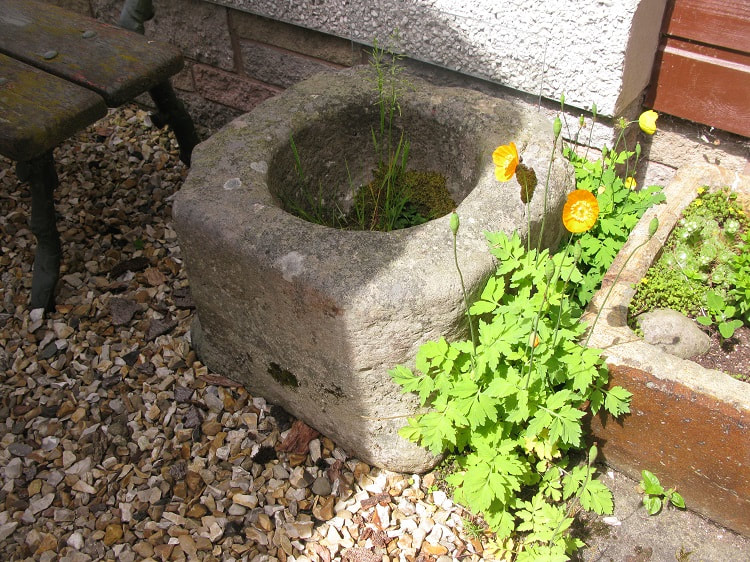|
Collecting Christian Aid envelopes in the modern houses of Grafton Bank, Town Yetholm, a YHS member noticed the object shown above. Measuring approximately 18 inches X 18 X 12 inches tall, the corners have been cut away and are slightly rounded at the bottom, a bit like feet. The bowl is about 9 inches deep. There is no decoration on the outside, which is a bit battered, but the bowl itself has been carefully worked and is smooth. Where was it from? What could it be?
It was found, according to the owner, in the fields on the lower slope of of Staerough - in other words not far from the church. It is rather small for a font, but that is what it looks like - might we have found another fragment from the lost medieval church? Help was sought from James King, who has recently surveyed the Romanesque stones that have survived and which have now been returned to the shelter of the church (see blog for March 2018). This is what he had to say: My first reaction to the photos was that it was a mortar, but I thought that mortars had to have a spout. As a result, I sent the photos to another scholar who informed me that mortars used for dry goods didn't have spouts ... Of course, we cannot be certain, but this does have the appearance of having been a domestic mortar. Mortars are notoriously difficult to date, but I've not seen any like this that are dated to a period before the 13th century and most are 14th or 15th century .... Apparently, it is not unusual to find mortars now preserved inside churches, even though they didn't originate from the church. This is because people think 'font' and therefore 'ecclesiastical' when they come across these elsewhere. As a result, they place them inside the local church for preservation. So it looks like our stone object is a mortar - for pounding grain or peas to make, perhaps, a kind of porridge. Disappointing in some ways - and yet this gives us a glimpse of domestic life in Yetholm in a period that is otherwise lost to view. Most of the buildings in the village today are no older than the eighteenth century, so this mortar is one of the few fragments that have survived from the Middle Ages. Coincidentally, the person who discovered the mortar was visitying Dryburgh Abbey a few days later and there in an arcade in the cloister was a collection of three unlabelled objects which he now recognised as domestic mortars - see below. They are much rougher externally than our Yetholm example and presumably were originally from the monastic kitchen. It looks like they must have eaten a lot of porridge in a medieval monastery!
24 Comments
|
Archives
July 2024
|


 RSS Feed
RSS Feed
